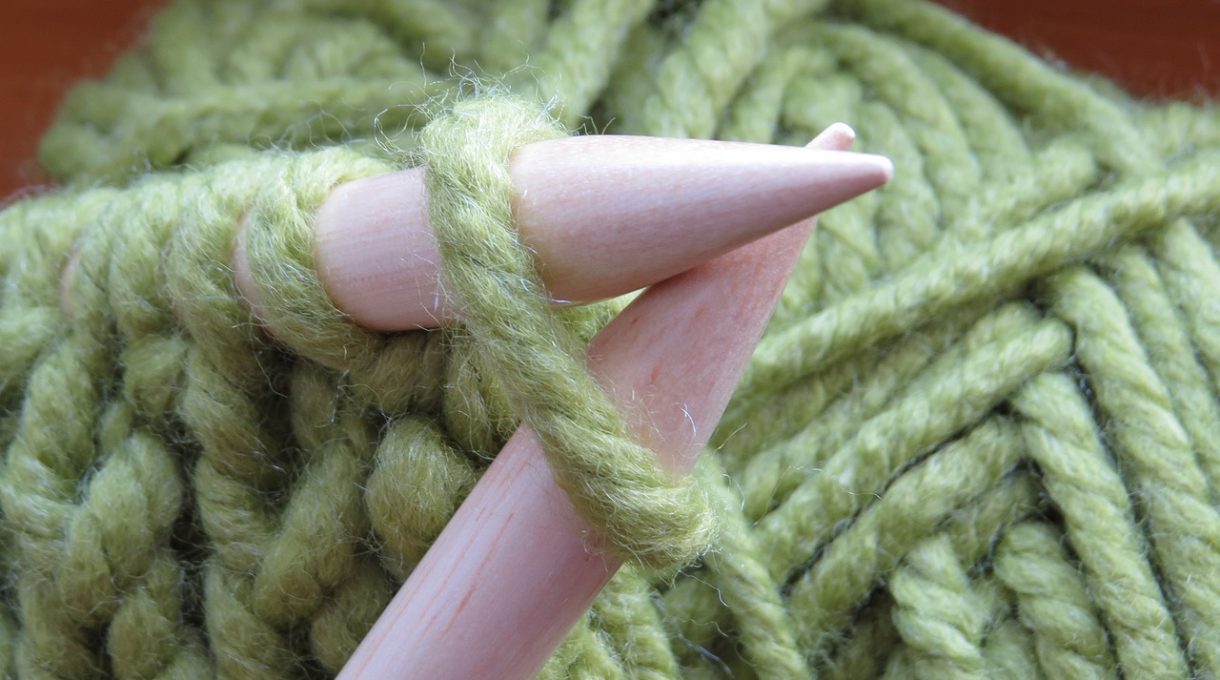In the past 50 years, knitting patterns have tended to conform to generally-accepted standards. Before these standards came into being, people wrote knitting patterns using the terminology and conventions of their time. When you first try to read a really old knitting pattern (like one published in the 1800’s), you may be surprised at the assumptions and terminology in it. This article provides 7 tips to help you read these vintage knitting patterns and convert them into modern form so that you, too, can create a knitted project just like your ancestors did.
Tip 1: Find Vintage Knitting Patterns
Here are some places you might find them:
- Your grandmother’s pattern library
- Used book store
- eBay
- Interweave Press
Tip 2: Figure Out The Stitch Terminology
That’s tricky! In some cases, the old books will include a glossary. But in general, the authors appear to assume that you know what they are talking about.
Here are just some of the stitches that you should know:
- The Knit stitch is often referred to as plain knitting.
- The Purl stitch can be called a Pearl, a Seam, a Rib stitch, or the instructions could be to knit with the yarn in front.
- The Yarn-Over can be called a Cast-Over, a Turn-Over, or Bring Yarn Forward.
- To decrease is to narrow.
- To increase is to widen.
- To pick up stitches is to take up stitches.
Tip 3: Figure Out The Materials Terminology
Another tricky area! If the author did specify materials (and that’s not common), you likely don’t know what they are and you can’t get them even if you did know.
A basic assumption is that they used fine yarns and fine needles.
Knitting needles of long ago were just lengths of wire with the ends rounded a bit to make it easier to knit. If needle sizes are given, they probably refer to the gauge of the wire, or the number of wires laid side-by-side in one inch. This means that a higher needle size number probably means a finer needle.
Tip 4: Figure Out What The Project Is
It is nice if there is a photo or drawing of the project. But the older the pattern, the less likely the picture exists.
Some of the names of the projects can be really puzzling. Your favorite search engine is useful here. For example, there are several patterns for Muffatees, or wrist warmers. A Knee-cap would be a knee warmer (like a leg warmer, but higher up and shaped around the knee. A Sontag is a shawl. A Cephaline is a bonnet.
Shawls and sweaters are much easier to understand.
Tip 5: Figure Out The Gauge
Gauge appears to be assumed in vintage patterns. When you combine this fact with the fact that the specified materials are likely not available today, you are in a good or bad state, depending on your mathematical skills.
You are probably going to make the project with modern yarn.
The key is to make a gauge swatch using your desired yarn and the appropriate needles for the yarn. Then, go to the next tip.
Tip 6: Figure Out The Size
People today are generally taller and larger than the population of a hundred or so years ago, so even if you could find the appropriate materials and knit the project as specified in the pattern, it’s not going to fit you anyway. (Side note: go to a museum with a medieval display and check out the sizes of the suits of armor – those were tiny knights!)
Occasionally, in the old patterns, you will find references to making a smaller or larger version of a project. The vast range of sizes that you find in today’s knitting patterns is a luxury of modern times.
Your best bet is to use the information from the gauge swatch AND your body measurements to calculate the appropriate number of stitches to cast on. Remember to consider the multiples in the fancy stitch pattern AND any border stitches.
For anything more complex than a scarf or shawl, it would be useful to draw a schematic of the project. Include the required measurements.
A hint: just because the original project used fine yarn and fine needles doesn’t mean that you have to. The interesting stitch or shaping given in the original project can be worked in fatter yarn and needles, with the additional benefit of being completed faster. Math skills are required!
Tip 7: Create Your Project
You now have most of the information necessary to make your project. You will likely have to make some more assumptions – if you have some knitting experience, you should be able to figure it out.
Conclusion
It is fascinating to read vintage knitting patterns. And if you do, you will develop a much greater appreciation for the efforts at standardizing today’s knitting patterns.
Photo. Sophie Janotta
Source: EA
